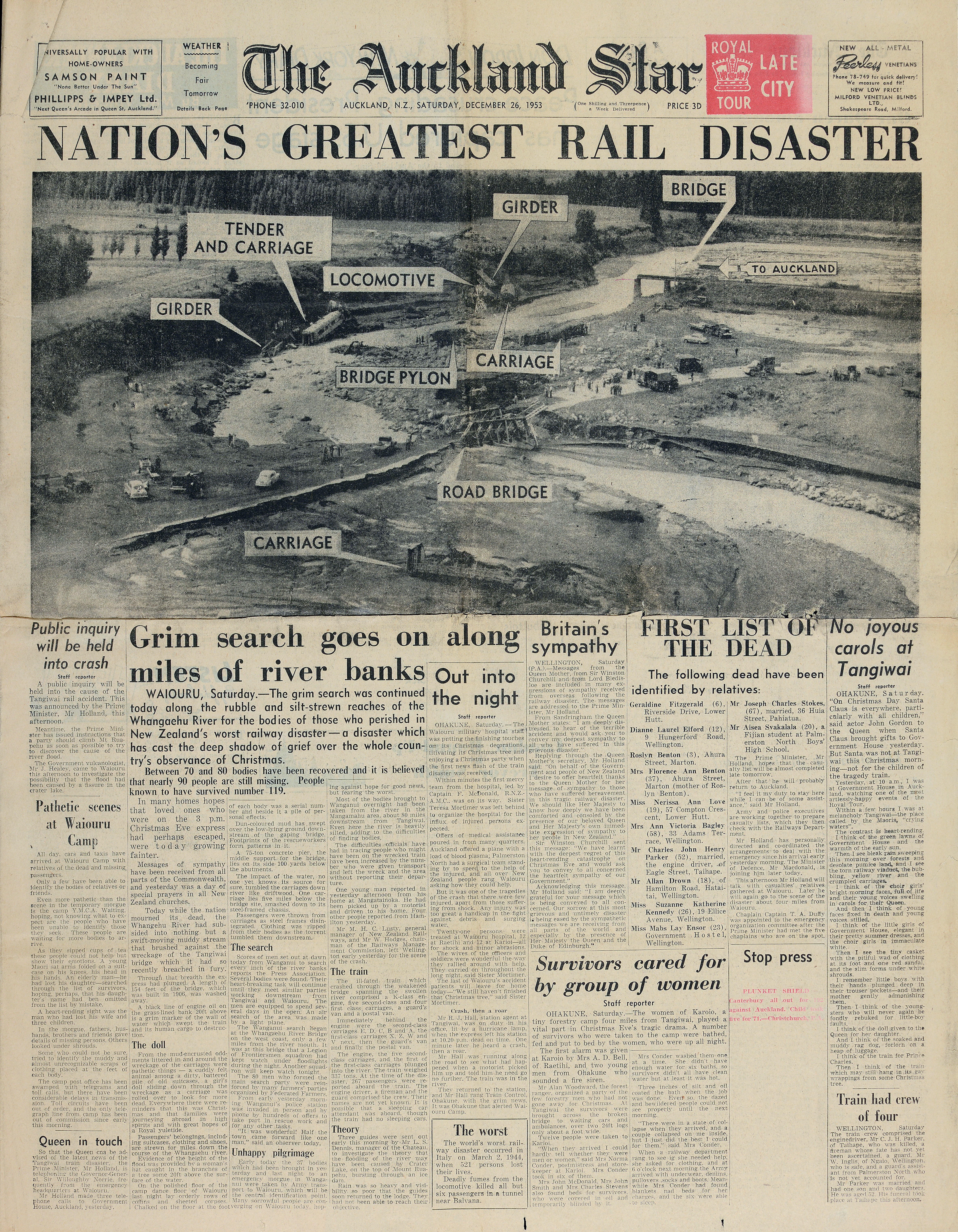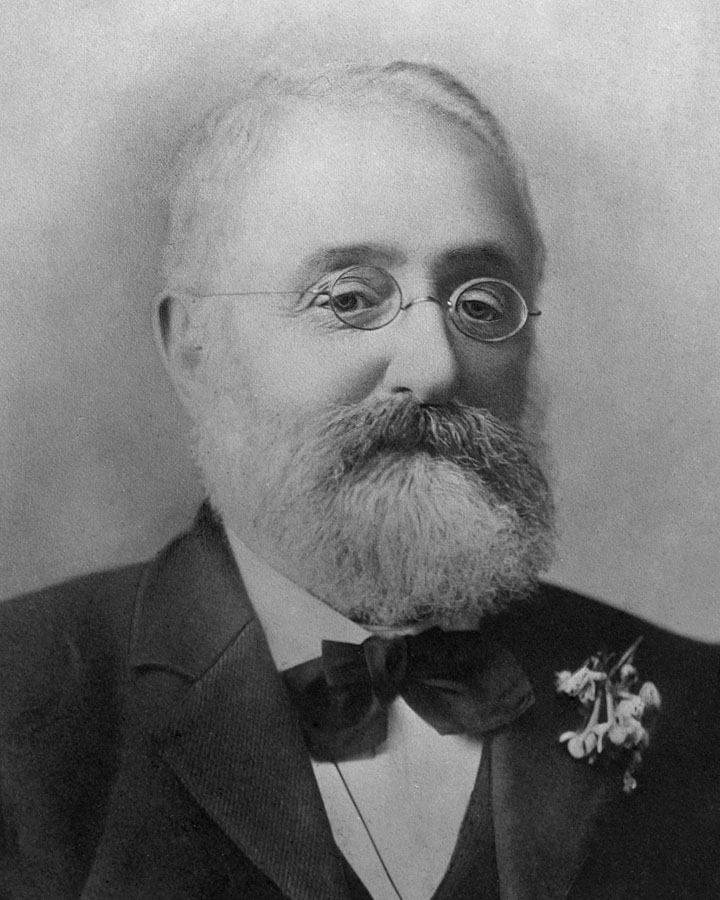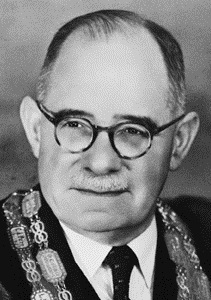|
Bill Anderton
William Theophilus Anderton (16 March 1891 – 20 January 1966) was a New Zealand politician of the Labour Party. He served as Minister of Internal Affairs in the second Labour Government, from 1957 to 1960. Early life Anderton was born in West Bromwich, Staffordshire, England. He married Annie Gertrude Mason in 1913, and they had two daughters and one son. He served in the British Army (Royal Artillery) in World War I. The family arrived in New Zealand in 1921 and settled in Christchurch for a year, before moving to Auckland. Political career In 1933 Anderton was elected to the Auckland City Council on a Labour Party ticket. He was re-elected in both 1935 and 1938 but was defeated in 1941. In 1944 he was Labour's candidate for Mayor of Auckland City, but was defeated by John Allum in an election which saw all Labour candidates defeated. Anderton was one of five candidates for the Eden electorate in the , and came second after the incumbent, Arthur Stallworthy ... [...More Info...] [...Related Items...] OR: [Wikipedia] [Google] [Baidu] |
Association Football
Association football, more commonly known as football or soccer, is a team sport played between two teams of 11 players who primarily use their feet to propel the ball around a rectangular field called a pitch. The objective of the game is to score more goals than the opposition by moving the ball beyond the goal line into a rectangular framed goal defended by the opposing side. Traditionally, the game has been played over two 45 minute halves, for a total match time of 90 minutes. With an estimated 250 million players active in over 200 countries, it is considered the world's most popular sport. The game of association football is played in accordance with the Laws of the Game, a set of rules that has been in effect since 1863 with the International Football Association Board (IFAB) maintaining them since 1886. The game is played with a football that is in circumference. The two teams compete to get the ball into the other team's goal (between the posts and under t ... [...More Info...] [...Related Items...] OR: [Wikipedia] [Google] [Baidu] |
British Army
The British Army is the principal land warfare force of the United Kingdom, a part of the British Armed Forces along with the Royal Navy and the Royal Air Force. , the British Army comprises 79,380 regular full-time personnel, 4,090 Gurkhas, and 28,330 volunteer reserve personnel. The modern British Army traces back to 1707, with antecedents in the English Army and Scots Army that were created during the Restoration in 1660. The term ''British Army'' was adopted in 1707 after the Acts of Union between England and Scotland. Members of the British Army swear allegiance to the monarch as their commander-in-chief, but the Bill of Rights of 1689 and Claim of Right Act 1689 require parliamentary consent for the Crown to maintain a peacetime standing army. Therefore, Parliament approves the army by passing an Armed Forces Act at least once every five years. The army is administered by the Ministry of Defence and commanded by the Chief of the General Staff. The British ... [...More Info...] [...Related Items...] OR: [Wikipedia] [Google] [Baidu] |
Auckland Star
The ''Auckland Star'' was an evening daily newspaper published in Auckland, New Zealand New Zealand ( mi, Aotearoa ) is an island country in the southwestern Pacific Ocean. It consists of two main landmasses—the North Island () and the South Island ()—and over 700 List of islands of New Zealand, smaller islands. It is the ..., from 24 March 1870 to 16 August 1991. Survived by its Sunday edition, the ''Sunday Star'', part of its name endures in '' The Sunday Star-Times'', created in the 1994 merger of the ''Dominion Sunday Times'' and the ''Sunday Star''. Originally published as the ''Evening Star'' from 24 March 1870 to 7 March 1879, the paper continued as the ''Auckland Evening Star'' between 8 March 1879 and 12 April 1887, and from then on as the ''Auckland Star''. One of the paper's notable investigative journalists was Pat Booth, who was responsible for notable coverage of the Crewe murders and the eventual exoneration of Arthur Allan Thomas. Booth and the p ... [...More Info...] [...Related Items...] OR: [Wikipedia] [Google] [Baidu] |
John Allum
Sir John Andrew Charles Allum (27 January 1889 – 16 September 1972) was a New Zealand businessman and engineer, and was Mayor of Auckland City from 1941 to 1953. Biography Early life and career Allum was born in London and educated at Goldsmiths College. He became a clerk and on 5 March 1908, he married Annie Attwood at Lewisham, and they emigrated to New Zealand the following year. He settled in Auckland briefly before working in Dunedin for four years before returning to Auckland in 1914. His stay was intended to be temporary, but he ended up living there the rest of his life. Allum was elected to the council of the Auckland Chamber of Commerce in 1919. An electrical engineer, Allum founded Allum Electrical in Auckland in 1922. He was the managing director of the company for many decades until his son Robert took over. Political career He was a member of the Auckland City Council from 1920 to 1929 when he was defeated. He was defeated again in 1931 trying to reclaim a coun ... [...More Info...] [...Related Items...] OR: [Wikipedia] [Google] [Baidu] |
Mayor Of Auckland City
The Mayor of Auckland City was the directly elected head of the Auckland City Council, the municipal government of Auckland City, New Zealand. The office existed from 1871 to 2010, when the Auckland City Council and mayoralty was abolished and replaced with the Auckland Council and the Mayor of Auckland. History Auckland obtained its first local government in 1851, when the Borough of Auckland was created, covering an area of . This short-lived entity, which existed for about one year, had only one mayor, Archibald Clark (politician), Archibald Clark. When the City of Auckland was formally incorporated in 1871, it covered a much smaller area of . Its municipal council was led by a chairman, Walter Lee (New Zealand politician), Walter Lee. Soon afterwards the office of Mayor of Auckland was created. At first, the mayor was elected by the councillors. In 1875, Benjamin Tonks was the first mayor elected at large, i.e. by the ratepayers. There were 39 holders of the position. The ... [...More Info...] [...Related Items...] OR: [Wikipedia] [Google] [Baidu] |
1944 Auckland City Mayoral Election
The 1944 Auckland City mayoral election was part of the New Zealand local elections held that same year. In 1944, elections were held for the Mayor of Auckland plus other local government positions including twenty-one city councillors. The polling was conducted using the standard first-past-the-post In a first-past-the-post electoral system (FPTP or FPP), formally called single-member plurality voting (SMP) when used in single-member districts or informally choose-one voting in contrast to ranked voting, or score voting, voters cast thei ... electoral method. Mayoralty results Councillor results References {{DEFAULTSORT:Auckland City Mayoral Election, 1944 Mayoral elections in Auckland 1944 elections in New Zealand Politics of the Auckland Region 1940s in Auckland ... [...More Info...] [...Related Items...] OR: [Wikipedia] [Google] [Baidu] |
The New Zealand Herald
''The New Zealand Herald'' is a daily newspaper published in Auckland, New Zealand, owned by New Zealand Media and Entertainment, and considered a newspaper of record for New Zealand. It has the largest newspaper circulation of all newspapers in New Zealand, peaking at over 200,000 copies in 2006, although circulation of the daily ''Herald'' had declined to 100,073 copies on average by September 2019. Its main circulation area is the Auckland region. It is also delivered to much of the upper North Island including Northland, Waikato and King Country. History ''The New Zealand Herald'' was founded by William Chisholm Wilson, and first published on 13 November 1863. Wilson had been a partner with John Williamson in the ''New Zealander'', but left to start a rival daily newspaper as he saw a business opportunity with Auckland's rapidly growing population. He had also split with Williamson because Wilson supported the war against the Māori (which the ''Herald'' termed "the ... [...More Info...] [...Related Items...] OR: [Wikipedia] [Google] [Baidu] |
Auckland City Council
Auckland City Council was the local government authority for Auckland City, New Zealand, from 1871 to 1 November 2010, when it and Auckland's six other city and district councils were amalgamated to form the Auckland Council. It was an elected body representing the 404,658 residents (2006 census) of the city, which included some of the Hauraki Gulf islands, such as Waiheke Island and Great Barrier Island. It was chaired by the Mayor of Auckland City. Elections The councillors and the mayor of Auckland City were elected every three years. In the 2007 elections, the voter turnout was 39.4%, down from 48% in 2004 and 43% in 2001. Functions Amongst its other functions, the city council administered more than 700 parks and reserves throughout the country (2008 data).Auckland City Council Annual Report Summary 2007/2008 – Auckland City Council, 3 October 2008 It also had, amongst other things, 2214 km of footpaths, though these were often in bad condition (30% being rate ... [...More Info...] [...Related Items...] OR: [Wikipedia] [Google] [Baidu] |
1933 Auckland City Mayoral Election
The 1933 Auckland City mayoral election was part of the New Zealand local elections held that same year. In 1933, elections were held for the Mayor of Auckland City, Mayor of Auckland plus other local government positions including twenty-one city councillors. The polling was conducted using the standard first-past-the-post electoral method. Mayoralty results Councillor results References {{DEFAULTSORT:Auckland City Mayoral Election, 1933 Mayoral elections in Auckland 1933 elections in New Zealand Politics of the Auckland Region 1930s in Auckland ... [...More Info...] [...Related Items...] OR: [Wikipedia] [Google] [Baidu] |
Dictionary Of New Zealand Biography
The ''Dictionary of New Zealand Biography'' (DNZB) is an encyclopedia or biographical dictionary containing biographies of over 3,000 deceased New Zealanders. It was first published as a series of print volumes from 1990 to 2000, went online in 2002, and is now a part of '' Te Ara: The Encyclopedia of New Zealand''. The dictionary superseded '' An Encyclopaedia of New Zealand'' of 1966, which had 900 biographies. The dictionary is managed by the Ministry for Culture and Heritage of the New Zealand Government. An earlier work of the same name in two volumes containing 2,250 entries, published in 1940 by Guy Scholefield with government assistance, is unrelated. Overview Work on the current version of the DNZB was started in 1983 under the editorship of W. H. Oliver. The first volume covered the period 1769–1869 and was published in 1990. The four subsequent volumes were all edited by Claudia Orange, and they were published in 1993 (1879–1900), 1996 (1901–1920), 1998 ( ... [...More Info...] [...Related Items...] OR: [Wikipedia] [Google] [Baidu] |
Auckland
Auckland (pronounced ) ( mi, Tāmaki Makaurau) is a large metropolitan city in the North Island of New Zealand. The most populous urban area in the country and the fifth largest city in Oceania, Auckland has an urban population of about It is located in the greater Auckland Region—the area governed by Auckland Council—which includes outlying rural areas and the islands of the Hauraki Gulf, and which has a total population of . While Europeans continue to make up the plurality of Auckland's population, the city became multicultural and cosmopolitan in the late-20th century, with Asians accounting for 31% of the city's population in 2018. Auckland has the fourth largest foreign-born population in the world, with 39% of its residents born overseas. With its large population of Pasifika New Zealanders, the city is also home to the biggest ethnic Polynesian population in the world. The Māori-language name for Auckland is ', meaning "Tāmaki desired by many", in ref ... [...More Info...] [...Related Items...] OR: [Wikipedia] [Google] [Baidu] |
Christchurch
Christchurch ( ; mi, Ōtautahi) is the largest city in the South Island of New Zealand and the seat of the Canterbury Region. Christchurch lies on the South Island's east coast, just north of Banks Peninsula on Pegasus Bay. The Avon River / Ōtākaro flows through the centre of the city, with an urban park along its banks. The city's territorial authority population is people, and includes a number of smaller urban areas as well as rural areas. The population of the urban area is people. Christchurch is the second-largest city by urban area population in New Zealand, after Auckland. It is the major urban area of an emerging sub-region known informally as Greater Christchurch. Notable smaller urban areas within this sub-region include Rangiora and Kaiapoi in Waimakariri District, north of the Waimakariri River, and Rolleston and Lincoln in Selwyn District to the south. The first inhabitants migrated to the area sometime between 1000 and 1250 AD. They hunted moa, ... [...More Info...] [...Related Items...] OR: [Wikipedia] [Google] [Baidu] |





_p225_AUCKLAND%2C_NEW_ZEALAND.jpg)
